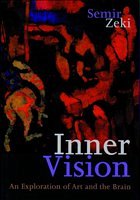The work of the artist and the science of vision may seem distantly related as subjects. However, When Leonardo da Vinci wrote that, of all the colours, the most pleasing are the ones which constitute opponents, he was uttering a physical truth about the visual brain. Inner Vision is the first attempt to relate the science of vision to art. Using a range of examples from artists including Michaelangelo, Rembrandt, Vermeer, Magritte, Malevich, and Picasso, Semir Zeki takes the reader on an aesthetic tour of the brain. He describes in compelling detail how different areas of the brain respond to elements of the visual arts such as colour, form, line, and motion, and argues that our experience of art relates strongly to the neuroanatomy of the visual cortex. Combining beautiful illustrations, rich insights, and entertaining prose, Inner Vision will be enthralling for scientists and artists alike. "Dr Zeki is one of the three founders of modern visual science. He has undertaken an ambitious project and has in my opinion succeeded admirably. The book is very readable and full of fascinating insights. It will appeal to a very wide audience including artists, neurologists, psychologists, and philosophers." V Ramachandran, University of California
When Leonardo da Vinci wrote that, of all the colours, the most pleasing are the ones which constitute opponents, he was uttering a physical truth about the visual brain. Semir Zeki's fascinating book describes in compelling detail how different areas of the brain respond to elements of the visual arts such as colour, form, line, and motion. Inner Vision is the first attempt to relate the science of vision to art, and combines beautiful illustrations and rich insights with entertaining prose accessible to all readers.
When Leonardo da Vinci wrote that, of all the colours, the most pleasing are the ones which constitute opponents, he was uttering a physical truth about the visual brain. Semir Zeki's fascinating book describes in compelling detail how different areas of the brain respond to elements of the visual arts such as colour, form, line, and motion. Inner Vision is the first attempt to relate the science of vision to art, and combines beautiful illustrations and rich insights with entertaining prose accessible to all readers.

